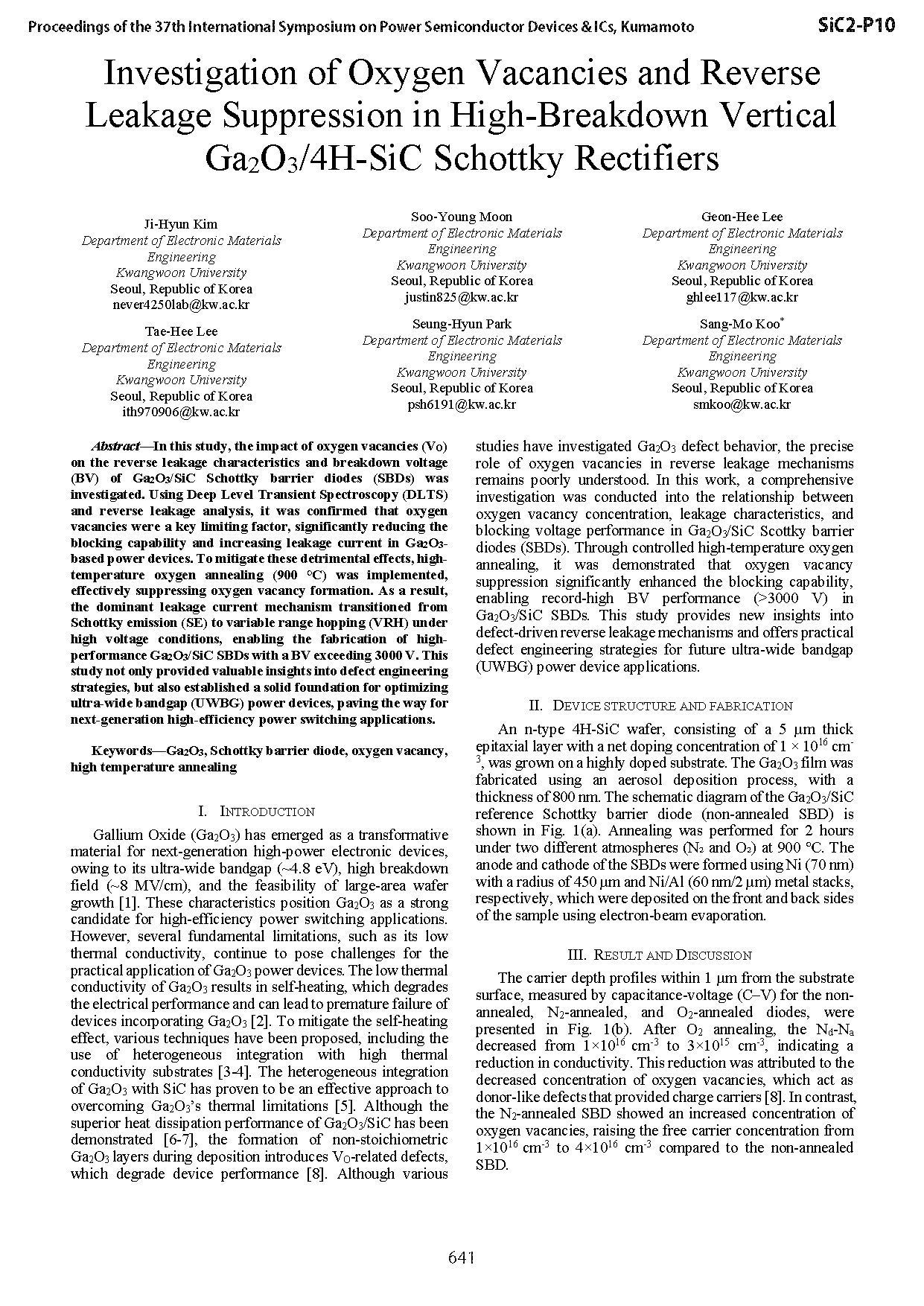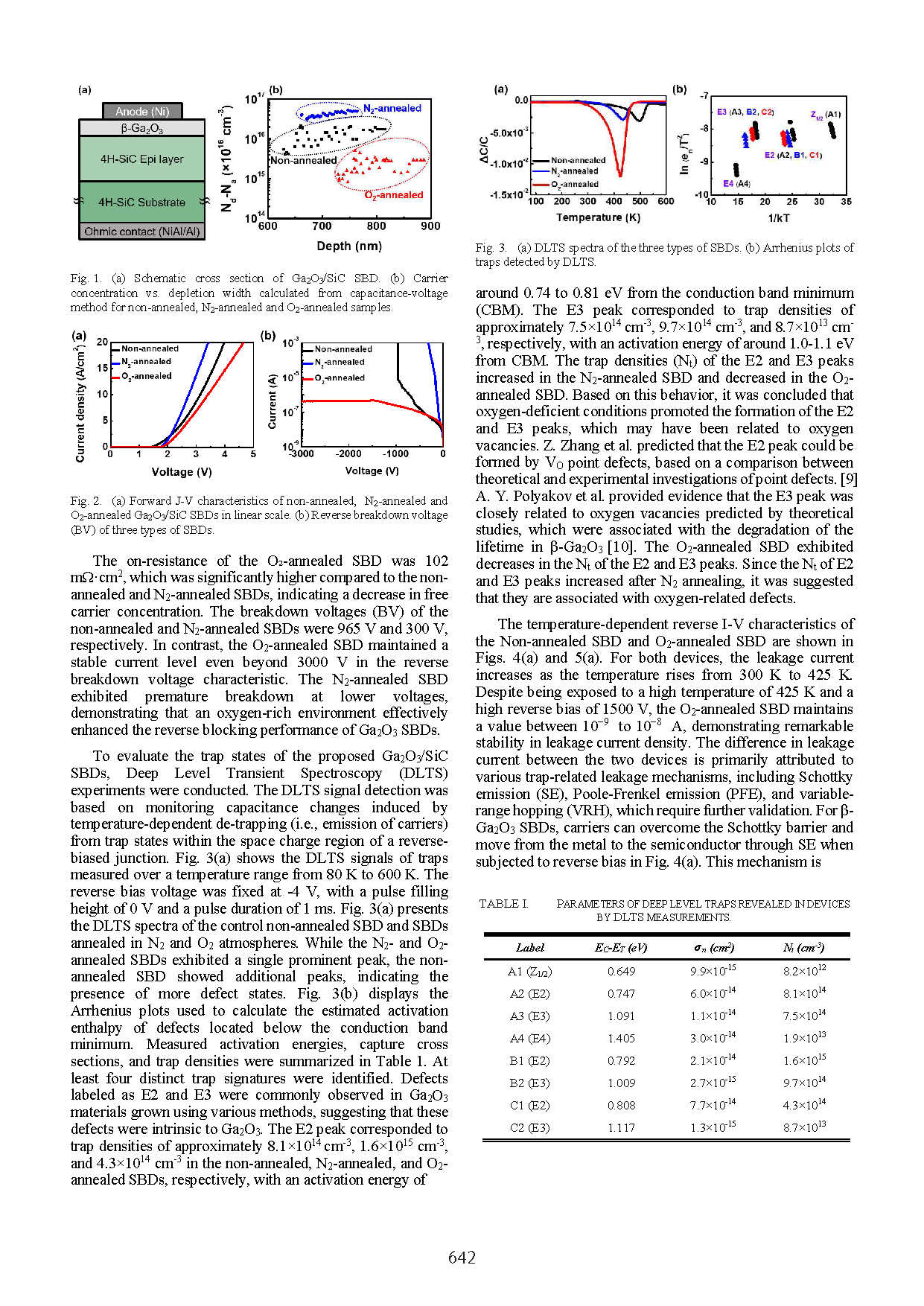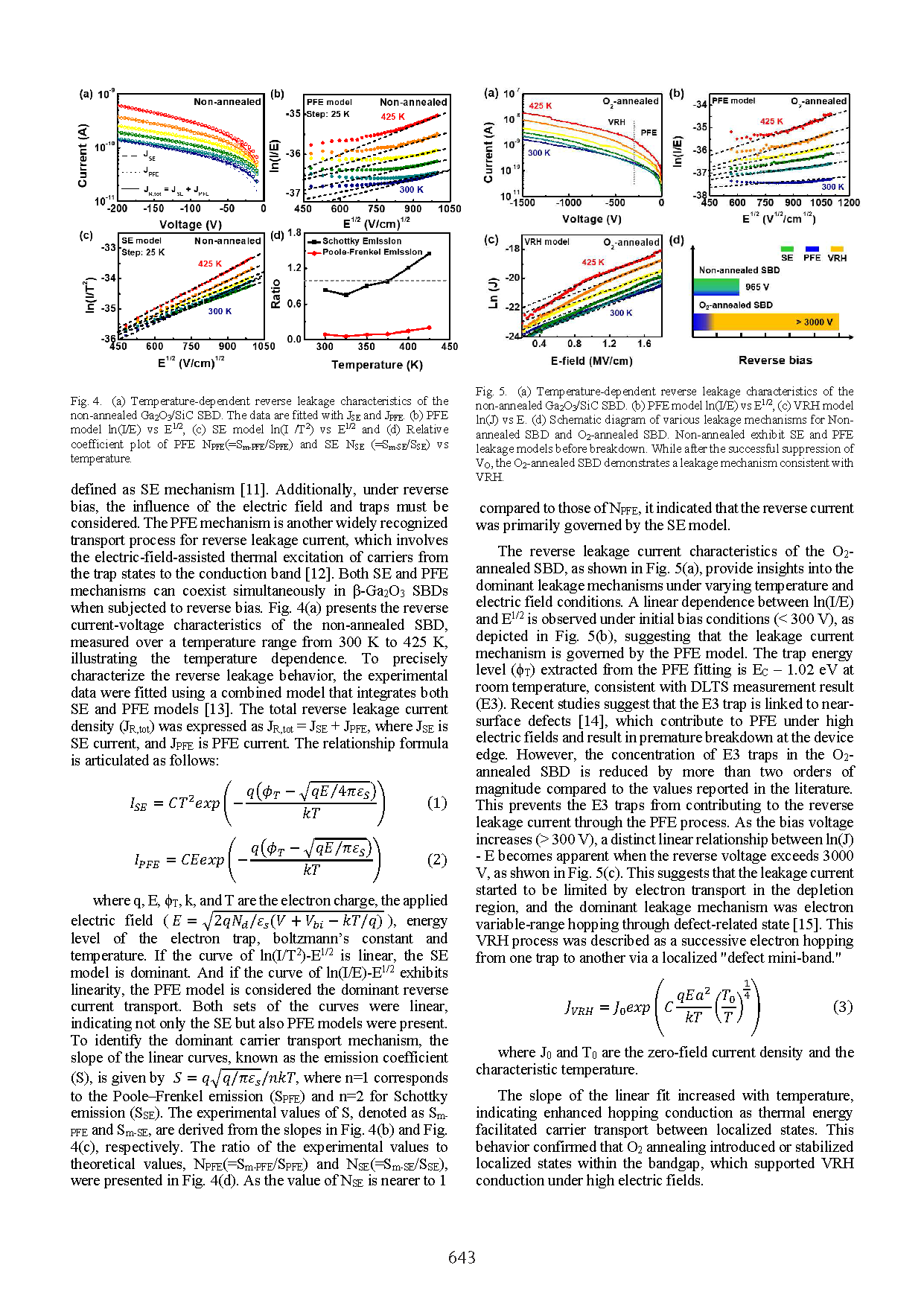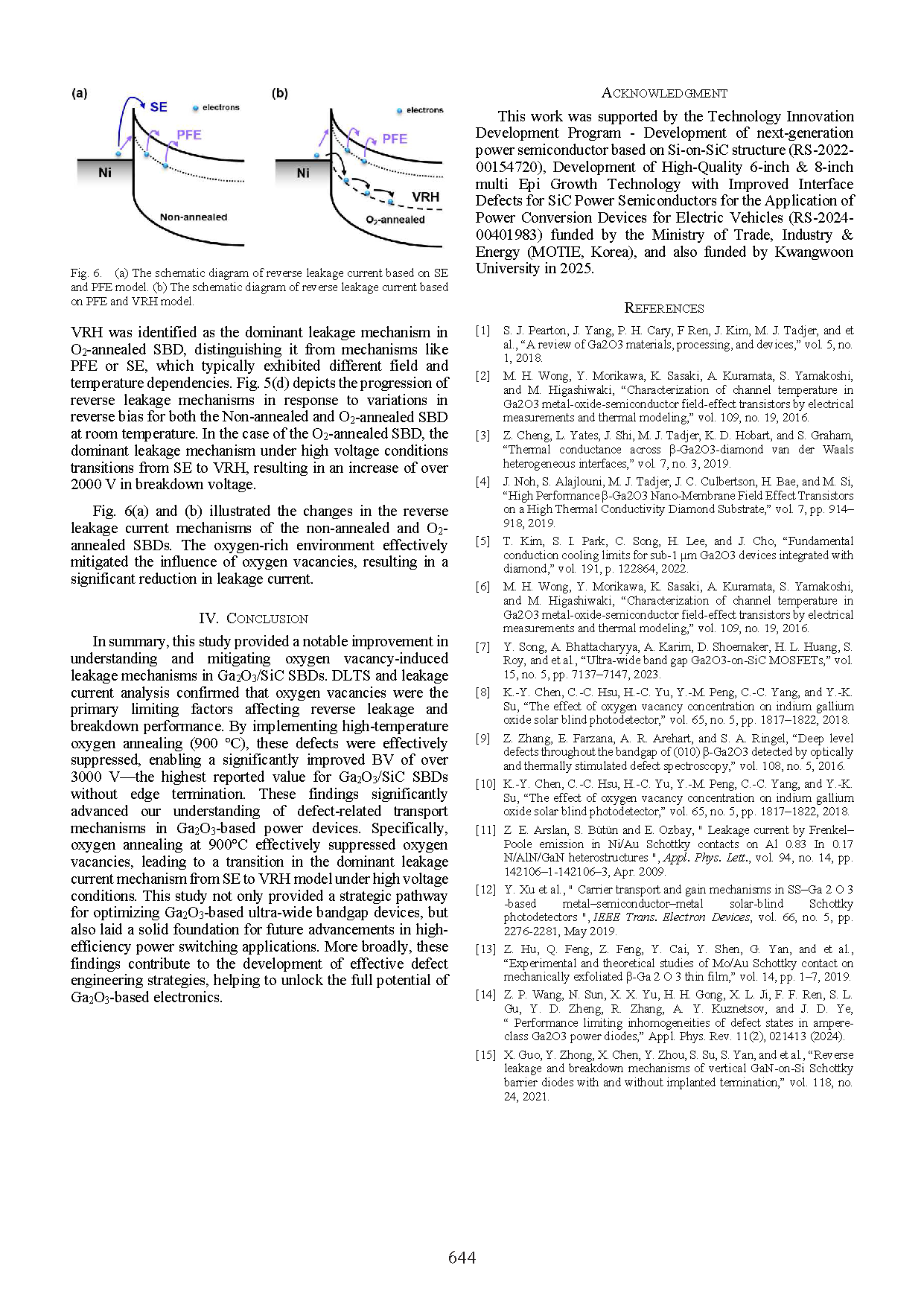
【International Papers】Investigation of Oxygen Vacancies and Reverse Leakage Suppression in High-Breakdown Vertical Ga₂O₃/4H-SiC Schottky Rectifiers
日期:2025-07-11阅读:239
Researchers from the Kwangwoon University have published a dissertation titled "Investigation of Oxygen Vacancies and Reverse Leakage Suppression in High-Breakdown Vertical Ga2O3/4H-SiC Schottky Rectifiers" in ISPSD 2025.
Background
Gallium Oxide (Ga2O3) has emerged as a transformative material for next-generation high-power electronic devices, owing to its ultra-wide bandgap (~4.8 eV), high breakdown field (~8 MV/cm), and the feasibility of large-area wafer growth. These characteristics position Ga2O3 as a strong candidate for high-efficiency power switching applications. However, several fundamental limitations, such as its low thermal conductivity, continue to pose challenges for the practical application of Ga2O3 power devices. The low thermal conductivity of Ga2O3 results in self-heating, which degrades the electrical performance and can lead to premature failure of devices incorporating Ga2O3. To mitigate the self-heating effect, various techniques have been proposed, including the use of heterogeneous integration with high thermal conductivity substrates. The heterogeneous integration of Ga2O3 with SiC has proven to be an effective approach to overcoming Ga2O3’s thermal limitations. Although the superior heat dissipation performance of Ga2O3/SiC has been demonstrated, the formation of non-stoichiometric Ga2O3 layers during deposition introduces VO-related defects, which degrade device performance. Although various studies have investigated Ga2O3 defect behavior, the precise role of oxygen vacancies in reverse leakage mechanisms remains poorly understood. In this work, a comprehensive investigation was conducted into the relationship between oxygen vacancy concentration, leakage characteristics, and blocking voltage performance in Ga2O3/SiC Scottky barrier diodes (SBDs). Through controlled high-temperature oxygen annealing, it was demonstrated that oxygen vacancy suppression significantly enhanced the blocking capability, enabling record-high BV performance (>3000 V) in Ga2O3/SiC SBDs. This study provides new insights into defect-driven reverse leakage mechanisms and offers practical defect engineering strategies for future ultra-wide bandgap (UWBG) power device applications.
Abstract
In this study, the impact of oxygen vacancies (VO) on the reverse leakage characteristics and breakdown voltage (BV) of Ga2O3/SiC Schottky barrier diodes (SBDs) was investigated. Using Deep Level Transient Spectroscopy (DLTS) and reverse leakage analysis, it was confirmed that oxygen vacancies were a key limiting factor, significantly reducing the blocking capability and increasing leakage current in Ga2O3- based power devices. To mitigate these detrimental effects, high-temperature oxygen annealing (900 ℃) was implemented, effectively suppressing oxygen vacancy formation. As a result, the dominant leakage current mechanism transitioned from Schottky emission (SE) to variable range hopping (VRH) under high voltage conditions, enabling the fabrication of high-performance Ga2O3/SiC SBDs with a BV exceeding 3000 V. This study not only provided valuable insights into defect engineering strategies, but also established a solid foundation for optimizing ultra-wide bandgap (UWBG) power devices, paving the way for next-generation high-efficiency power switching applications.
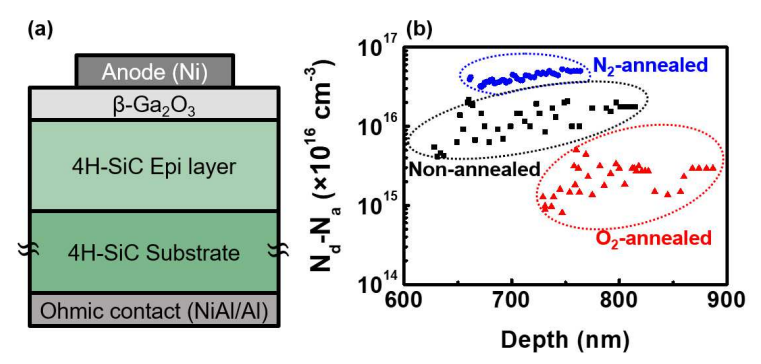
Fig. 1. (a) Schematic cross section of Ga2O3/SiC SBD. (b) Carrier concentration vs. depletion width calculated from capacitance-voltage method for non-annealed, N2-annealed and O2-annealed samples.
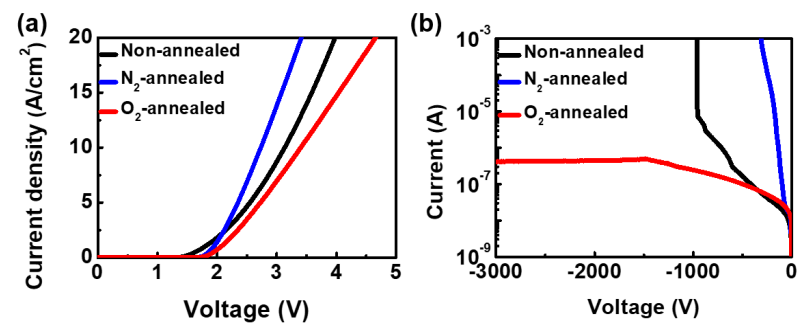
Fig. 2. (a) Forward J-V characteristics of non-annealed, N2-annealed and O2-annealed Ga2O3/SiC SBDs in linear scale. (b) Reverse breakdown voltage (BV) of three types of SBDs.
